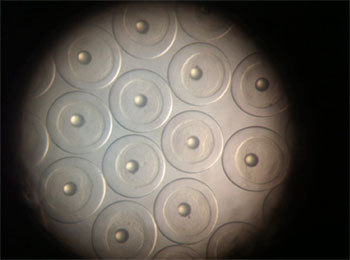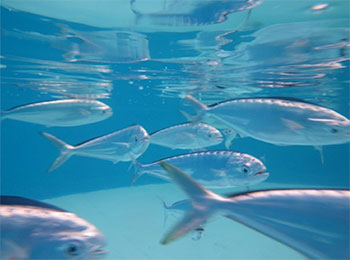A new study showed that several Gulf of Mexico fish embryos developed serious defects in heart development following exposure to crude oil from the Deepwater Horizon oil spill.
The study is the first to analyze the effects of the primary toxic agents released from crude oil on several commercially important pelagic fish species that spawn in the Gulf of Mexico.
The research team, which included five researchers from the University of Miami Rosenstiel School of Marine and Atmospheric Science, concluded that, “losses of early life stages were therefore likely for Gulf populations of tunas, amberjack, swordfish, billfish, and other large predators that spawned in oiled surface habitats.”
“This study is the first to understand the impacts of the Deepwater Horizon oil spill on the early life development of commercially important fish in the Gulf of Mexico,” said Daniel Benetti, Rosenstiel School professor of marine affairs and policy and director of the Aquaculture Program. “The findings can be applied to fisheries management questions in marine regions where crude oil extraction is prevalent.”

Mahi-mahi embryos approximately 8 hours post-fertilization
The study, published in the March 25 issue in the journal of the Proceedings of the National Academy of Science (PNAS), assessed the impacts of polycyclic aromatic hydrocarbons (PAHs), a toxic agent released from crude oil, from Deepwater Horizon oil samples on embryos of bluefin tuna, yellowfin tuna, and amberjack. Embryos were exposed to two different oil samples, one collected from surface skimming operations in the Gulf of Mexico and another from the source pipe attached to the damaged Deepwater Horizon wellhead.
A vast number of the water samples collected at the Deepwater Horizon oil spill site had PAH concentrations exceeding the toxicity thresholds observed in the study, therefore researchers demonstrated the potential for losses of pelagic fish larvae during the 2010 Deepwater Horizon disaster.
“Having access to the aquaculture facility and expertise at The Rosenstiel School positioned our team of UM scientists to address questions regarding the impacts of the 2010 Deep Water Horizon oil spill on these important pelagic top predators,” said Martin Grosell, Maytag professor of ichthyology at the Rosenstiel School. “The present study is the first of several on the topic to emerge from efforts by scientists and graduate students at the Rosenstiel School.”
The embryos used in the study were collected from research broodstock located at land-based fish hatcheries in Australia and Panama. Test methods were developed and designed by Grosell and Benetti’s team at the Rosenstiel School’s experimental hatchery facility.

Mahi-Mahi juveniles
Exposure to each oil type produced virtually identical defects in embryos of all three tested species. For each species, oil exposures caused serious defects in heart development, and abnormalities in cardiac function, indicating crude oil cardiotoxicity. Bluefin tuna showed the highest percentage of larvae with the entire suite of defects, and their populations are currently listed by the IUCN as endangered due to historically low levels.
The April 2010 Deepwater Horizon oil spill in the northern Gulf of Mexico released more than four million barrels of crude oil into the surrounding waters during the seasonal spawning window for bluefin and yellowfin tunas, mahi mahi, king and Spanish mackerels, greater and lesser amberjack, sailfish, blue marlin, and cobia, all commercially and ecologically important open-ocean fish species.
“Vulnerability assessments in other ocean habitats, including the Arctic, should focus on the developing heart of resident fish species as an exceptionally sensitive and consistent indicator of crude oil impacts,” said the paper’s authors.
The paper is titled “Deepwater Horizon Crude Oil Impacts the Developing Hearts of Large Predatory Pelagic Fish.” The co-authors include Andrew J. Esbaugh, Edward M. Mager, John D. Stieglitz, Daniel D. Benetti and Martin Grosell from the UM Rosenstiel School of Marine and Atmospheric Science; and scientists from the NOAA Northwest Fisheries Science Center in Seattle, Stanford University’s Hopkins Marine Lab, and University of the Sunshine Coast in Australia.

